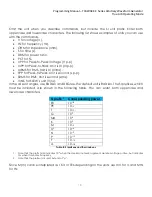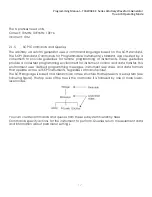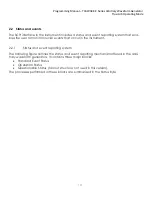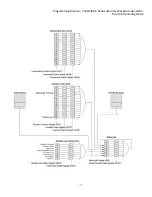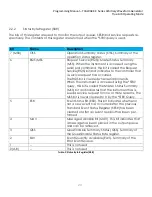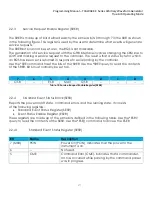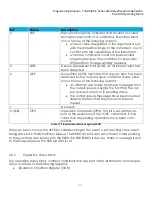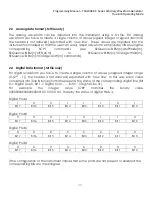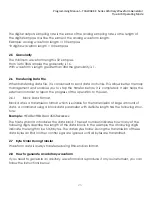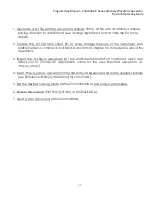
Programming Manual
–
T3AWG3K-C Series Arbitrary Waveform Generator
True-Arb Operating Mode
11
2.
S
YNTAX AND
C
OMMANDS
2.1
Command Syntax
2.1.1
Syntax Overview
Control the operations and functions of the instrument through the LAN interface using
commands and queries. The related topics listed below describe the syntax of these
commands and queries. The topics also describe the conventions that the instrument uses to
process them. See the Command Groups topic for a listing of the commands by command
group or use the index to locate a specific command.
Refer to the following table for the symbols that are used.
Symbol
Meaning
< >
Defined element
::=
Is defined as
|
Exclusive OR
{ }
Group; one element is required
[ ]
Optional; can be omitted
...
Previous elements can be repeated
( )
Comment
Table 3: Syntax symbols and their meanings
2.1.2
Command and Query Structure
Overview
Commands consist of set commands and query commands (usually called commands and
queries). Commands modify instrument settings or tell the instrument to perform a specific
action. Queries cause the instrument to return data and status information.
Most commands have both a set form and a query form. The query form of the command
differs from the set form by its question mark on the end.
For example, the set command
OUTPut1:STATe
has a query form
OUTPut1:STATe?
.
Not all commands have both a set and a query form. Some commands have only set and
some have only query.
Messages
A command message is a command or query name followed by any information the
instrument needs to execute the command or query. Command messages may co
ntain five
element types, defined in the following table.

















